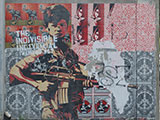Understanding the Recruitment of Child Soldiers in Africa
30 Dec 2016
By Anne-Lynn Dudenhoefer for African Centre for the Constructive Resolution of Disputes (ACCORD)
This article was external pageoriginally publishedcall_made by the external pageAfrican Centre for the Constructive Resolution of Disputes (ACCORD)call_made on 16 August 2016.
While it is estimated that about 40% of all child soldiers globally are active on the African continent, scholars appear to evaluate this number in different ways. Vera Achvarina and Simon Reich draw the conclusion that “[s]ince 1975, Africa has become the epicentre of the problem, providing the largest concentration of both conflicts and child soldiers”.1 On the other hand, Mark A. Drumbl states that “only a plurality – reportedly, about 40% – of the global number of child soldiers is located on the African continent”.2 Many African societies are experiencing or have experienced civil conflict at some stage, but it is important to emphasise that this article does not intend to “Africanize a global phenomenon and pathologize African conflicts”.3
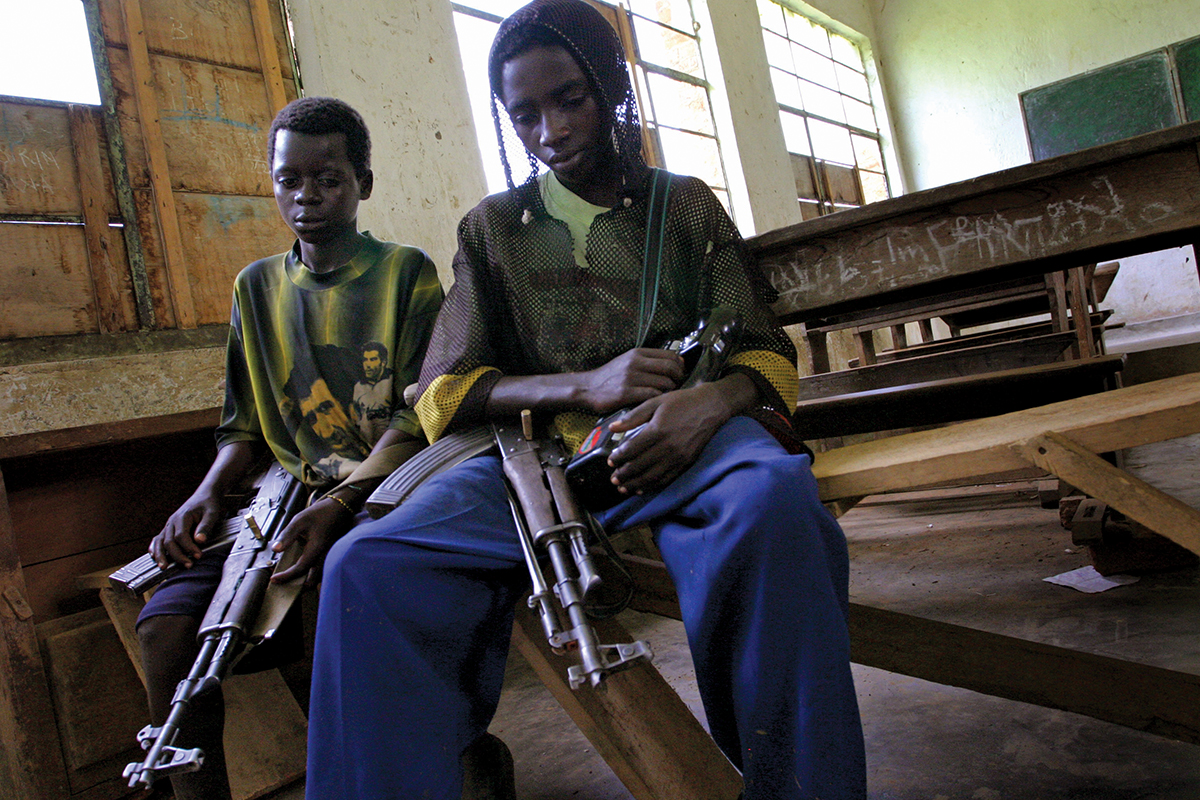
Although the causes of civil conflicts remain almost too complex to be thoroughly analysed, some attention has to be paid to the so-called feasibility thesis, which suggests that rebellious movements occur where they are feasible.4 Underlying causes of civil conflicts can be said to be low per-capita income and slow economic growth, among others.5 For rebel groups and other individuals, civil war might be seen as an economic opportunity. Other explanations for civil war, and its reasons, such as the greed and grievance debate, have been challenged and will not be tackled in this article.6
To understand the living situation of many African children, it is essential to recognise the risk involved with a post-conflict society relapsing into conflict. Within a time span of a decade, according to Paul Collier et al., this risk is as high as 40%7 – meaning that many children live in an environment that is constantly under threat of reverting to conflict. “Many of these wars do not formally end through victory or negotiated settlement; they are low-intensity conflicts […]. It is in these types of environments that we are most likely to encounter the use of child soldiers.”8
Moreover, the end of the cold war left some armed forces or groups without further financial support – before, they had been supported by either the United States or the Soviet Union fighting proxy wars.9 The result was that “[g]roups no longer able to finance their conflicts pursued peace negotiations, were defeated militarily, or started recruiting or abducting relatively cheap child soldiers”.10
By understanding the recruitment process of child soldiers, the design of post-conflict reintegration programmes can be improved. Future recruitment can be prevented if international agencies know the underlying causes for employing child soldiers. Therefore, two major questions require further exploration. First, why are child soldiers recruited at all? Second, why and how do children join armed forces and groups? Not all recruitment can be said to happen involuntarily. In other words, the push and pull factors involved have to be critically assessed.
The Reasons for Recruitment
The benefits of recruiting child soldiers seem to be concealed when first approaching the topic. Why would any army or military movement rely on the inferior physical power and inexperience of children? Why are children the “weapon of choice” in so many countries?11
Roméo Dallaire, who encountered child soldiers in the Rwandan genocide, states that more than 50% of the population in many African conflict or post-conflict zones consists of children younger than 18 years old.12 Consequently, one of the reasons for employing child soldiers is that “they are viewed as expendable, replaceable” – and they are cheap to maintain. They are also psychologically more vulnerable than many adults, who already have a more shaped personality. Since younger children, in particular, can lack a sense of fear, they might be preferred over adults because they accept more dangerous tasks without scrutinising them.13 Children’s and adolescents’ identities are still being formed, meaning that they can be more easily influenced and controlled, since they are dependent on protection and guidance. If parents, family and friends are lost, children might:
…transfer loyalty to another adult, especially one who holds the power of reward and punishment. They can be psychologically manipulated through a deliberate programme of starvation, thirst, fatigue, voodoo, indoctrination, beatings, the use of drugs and alcohol, and even sexual abuse to render them compliant to the new norms of child soldiering.14
Still puzzling, though, is the question of how children can actually be effective in direct combat, given the fact that they are smaller and physically weaker than adults? Child soldiers are able to take part in combat, due to the widespread and global proliferation of small arms – mainly AK-47 assault rifles, the so-called Kalashnikovs. “[T]echnological improvements in small arms now permit these child recruits to be effective participants in warfare,”15 which makes them almost as dangerous and effective as any adult soldier. Approximately more than 70 million AK-47 rifles have been produced globally since 1947,16 and this weapon “can be easily carried and used to deadly effect by children as young as 10”.17
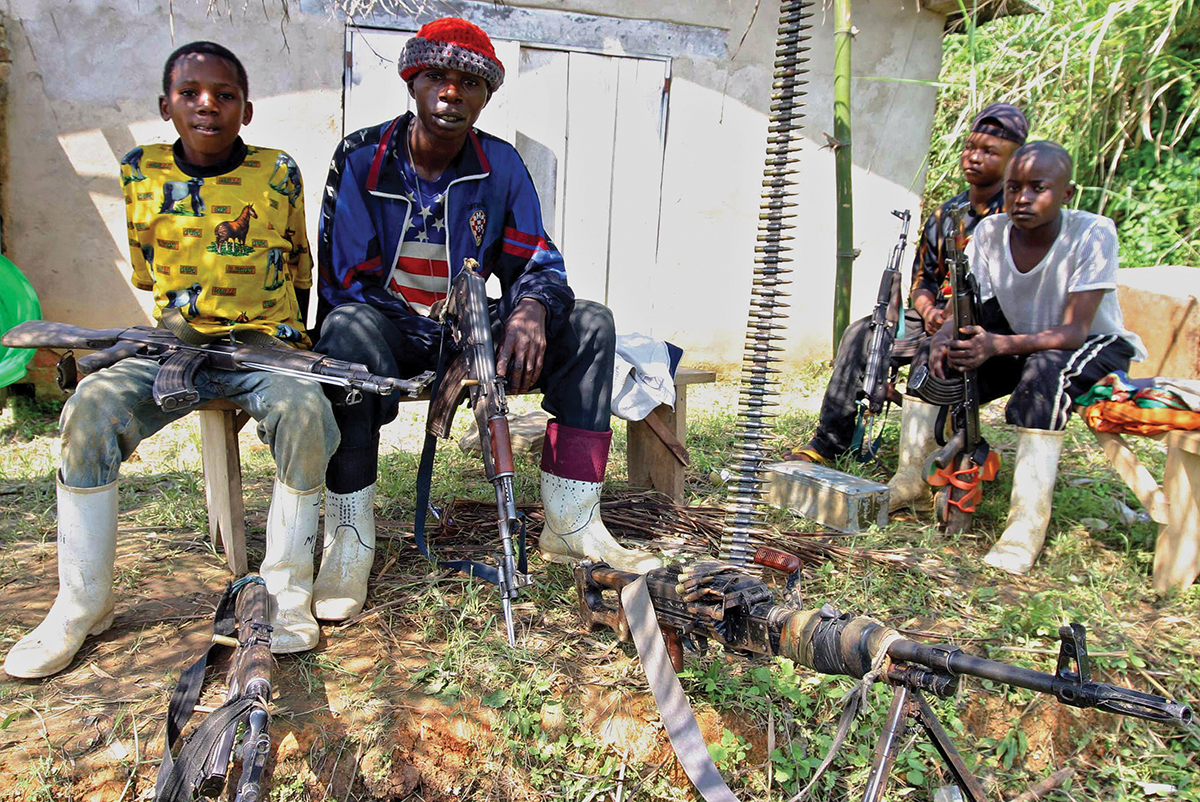
Due to the wide proliferation of small arms, two major problems are faced in post-conflict societies and throughout the disarmament and demobilisation process. First, a country’s leadership finds itself confronted with large stocks of so-called “surplus weapons”, which could pose a serious security threat if they fall into the wrong hands.18 Second, “enormous numbers of weapons remain or fall in the hands of ex-combatants”19 because disarmament programmes might have limited success – many combatants own more than one weapon and are suspicious about turning them in, in case ceasefires do not hold.
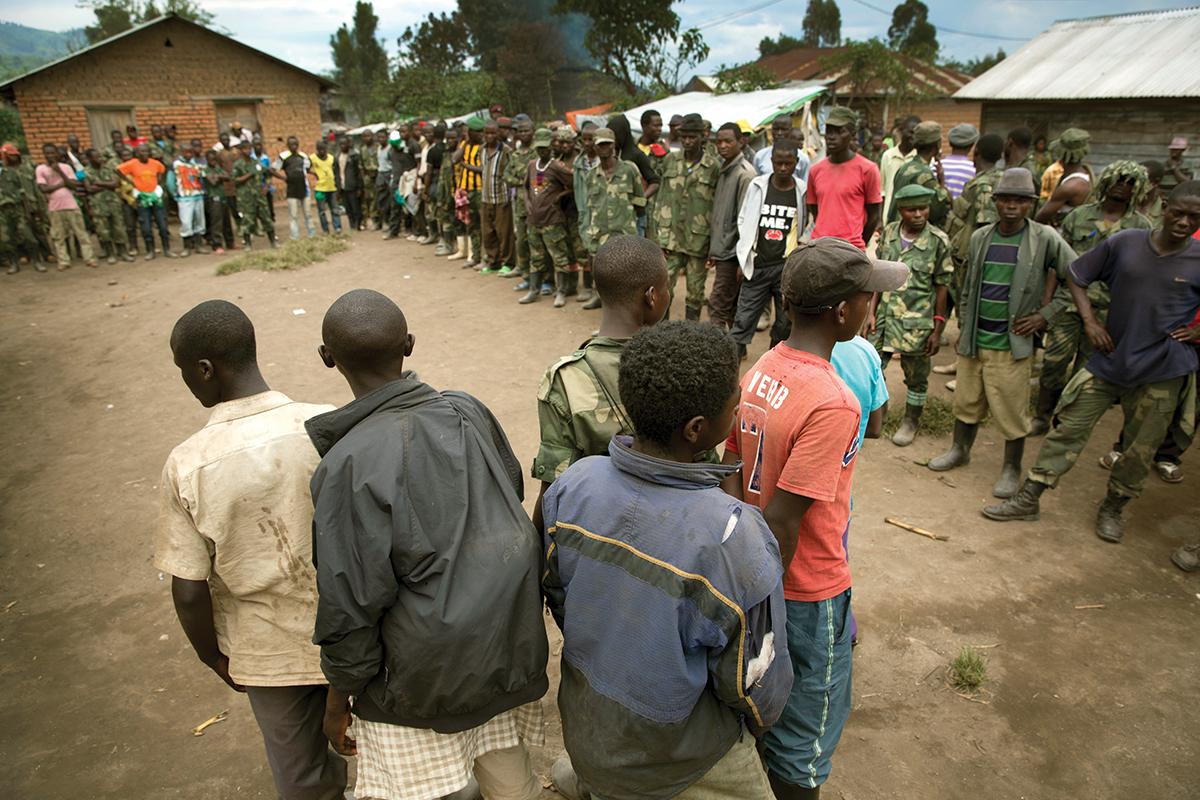
Although the spread of light weaponry certainly does play a significant role in the use of child soldiers, it has to be borne in mind that children also participate in conflict without technologically advanced weapons. In Rwanda, killings took place by either using a panga, which is a machete, or a masu, a club studded with nails.20 As Drumbl states: “Child soldiering connects to these conventionally cited and situational forces [but…] is, however, much more than merely epiphenomenal to these forces.”21 To understand more about the recruitment of child soldiers, both forced and voluntary recruitment have to be thoroughly analysed.
Forced Recruitment
Abduction is the most common method by which child soldier recruitment takes place. In short, there are two primary ways children can become child soldiers:
- they are abducted, or conscripted through coercion or severe threats; or
- they are born into forces or groups.22
The Ugandan Lord’s Resistance Army (LRA), for example, is commonly known for abducting children from their homes. According to the 2008 Global Report on Child Soldiers by the Coalition to Stop the Use of Child Soldiers, the LRA has abducted about 25 000 children since the 1980s. “During active hostilities children in the LRA were forced to participate in combat and to carry out raids, kill and mutilate other child soldiers and civilians, and loot and burn houses.”23 Although most parents and family try to hide and protect their children, many of them get taken anyway – as in the case of an adolescent who had been abducted at the age of 16 in Sierra Leone:
My Dad and I were planting rice and the Revolutionary United Front (RUF) came and captured us. Dad begged the soldiers to release me, but they insisted… Dad trailed them since he couldn’t let me go… So they killed my Dad.24
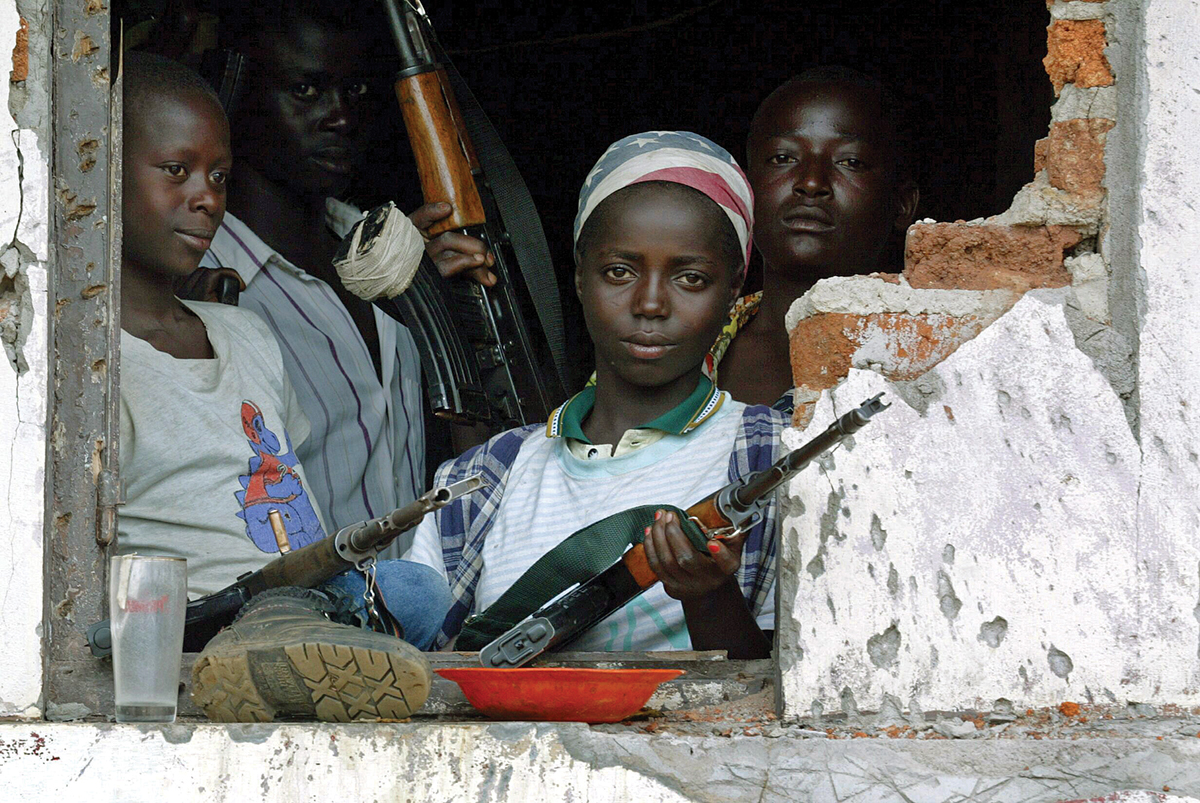
Similar to the LRA, the RUF in Sierra Leone used abduction as one of its main recruitment methods, but it should not be forgotten that “all sides had recruited children, who were the main victims of forced recruitment”25 – meaning that the pro-government Civil Defence Forces (CDF), the Armed Forces Revolutionary Council (AFRC) and the Sierra Leone Army also forced children into their ranks. “By 1998 about 25% percent of the fighting forces were under 18.”26
Voluntary Recruitment
However, if children are not forcibly recruited, why do they decide to join armed groups and forces, apart from peer pressure? Whereas push factors first drive children away from their known environment, pull factors encourage them to join the fighting forces. Push factors include “grievances, repression and discrimination”27 as well as poverty, lack of education and employment, abuse at home or – due to previous conflict – having no home or community at all any more. Pull factors include – paradoxically – seeking security in fighting forces, provision of food, a sense of belonging and ideology or group identity, as well as economic reasons such as gaining profit.28 A study on recruitment in Colombia, for example, revealed that many children who voluntarily joined the Revolutionary Armed Forces of Colombia (FARC) were driven by “poverty, unemployment, vengeance, avoiding violence from the rival group, and the allure of the military life”29 as main push factors
Furthermore, children are often promised some payoff when joining armed forces and groups. These can be divided into pecuniary and non-pecuniary rewards, with pecuniary rewards mostly consisting of “wages, one-shot monetary rewards (often associated with loot), and other tangible rewards such as drugs and alcohol”.30 Non-pecuniary rewards could include the achievement of rank, bonding with comrades and commanders, and forming a group identity. All these factors are used to motivate group members, which is why allegiance is seldom achieved by pecuniary rewards but rather by certain socialisation processes.31 Hence, not all children are simply forced at gunpoint to become combatants – in many cases, their decision is made based on their social, cultural and economic environment and limited opportunities.
One remaining significant question is why the use of child soldiers differs from area to area or country to country? It is important to realise that numerous reasons are valid, and that it is tempting but misleading to make sweeping generalisations. However, it is crucial not to omit so-called accessibility factors, which describe to which extent children are easily accessible for recruiters.32 Recent studies have suggested that the previously mentioned push and pull factors indeed contribute to children becoming soldiers, but those factors alone do not capture the full picture.
For recruiters, easy access to large groups of children is provided in refugee and internally displaced persons (IDP) camps. While “[i]nternational law mandates respect the civilian and humanitarian character of refugee camps and prohibits refugee participation in military activity”,33 the same does not hold true for IDP camps. Here, international law assumes that since people are internally displaced, their national governments will take care of them. “In reality, though, IDPs flee because their government cannot or will not protect them”34 – meaning that, in many cases, IDP camps remain almost unprotected, thus turning into major recruitment grounds, infiltrated by fighting forces.
Political scientist Sarah K. Lischer recognises two main patterns by which children are recruited in refugee and IDP camps: the militarisation path and the insecurity path.35
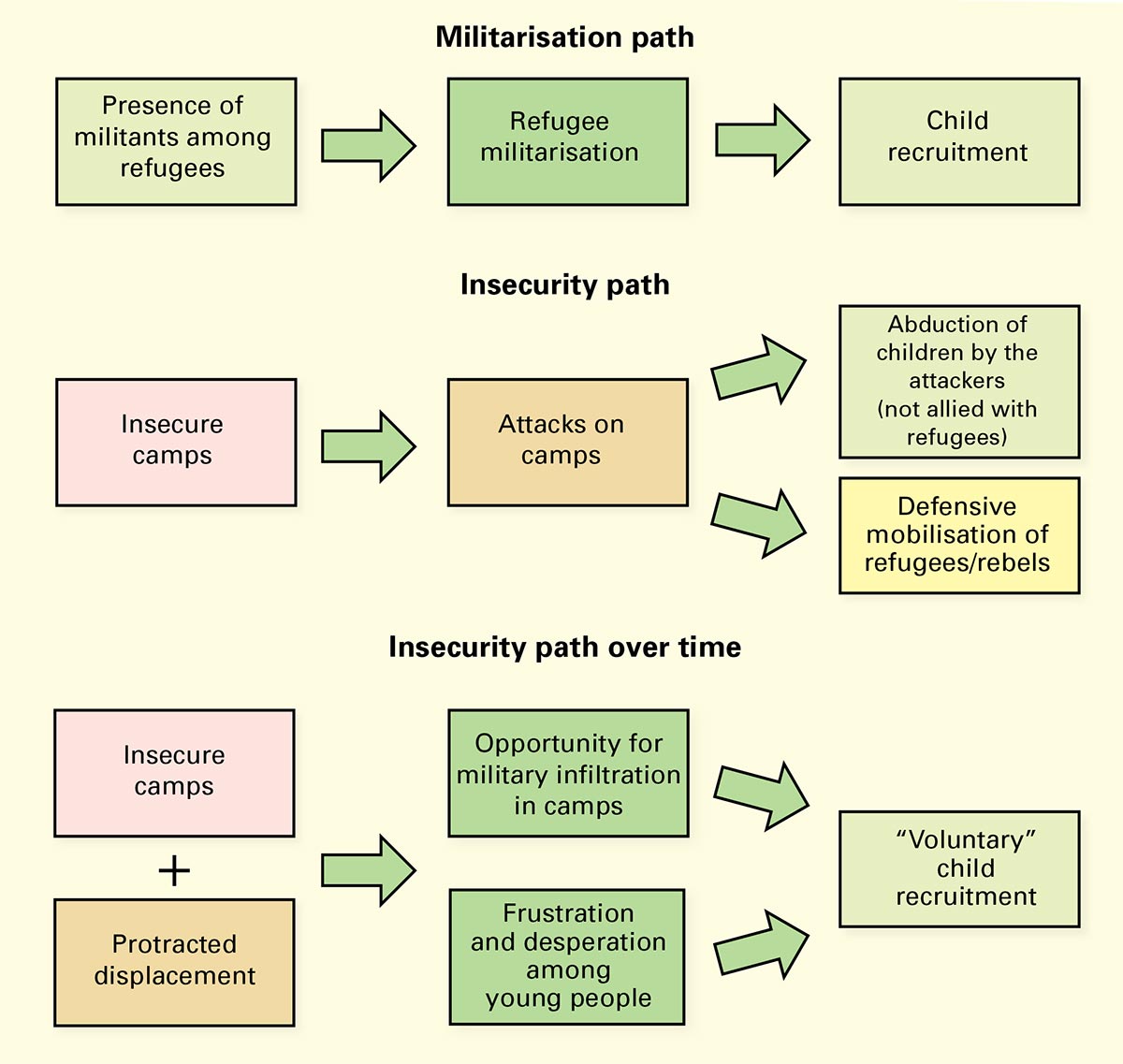
As visualised above, both the militarisation path and the insecurity path are actively used in refugee camps to recruit new child soldiers. The presence of non-civilian militants among refugees can lead to refugee militarisation, and subsequently to the recruitment of child soldiers. Insecure camps, on the other hand, pave the path for the abduction of refugee children by militant groups, while the insecurity path over time leaves room for potential child soldier recruiters to infiltrate the camps and indoctrinate children and adolescents.
Another study went even further by stating that “substantial poverty rates say little about whether a country is likely to have child soldier participants in armed conflicts”.36 Moreover, it is argued that even orphan and child soldier rates do not exhibit any significant correlation in the countries under investigation, such as Sudan, the Democratic Republic of the Congo (DRC), Burundi, Senegal, Mali, Rwanda, Uganda, Angola, Mozambique, Sierra Leone and Lesotho.37 As can be seen, although circumstances such as severe poverty can definitely have a threshold effect, accessibility factors should not be underestimated. Due to this realisation, non-governmental organisation workers and volunteers often try to protect refugee and IDP camps by their mere physical presence, trying to deter recruiters:
This “protection by presence” usually breaks down in the face of life-threatening security situations. In 2006, riots in a camp for internally displaced persons in Darfur, Sudan, forced the evacuation of aid workers and journalists from the camp. The only security force consisted of a handful of unarmed African Union soldiers.38
Such situations leave children particularly vulnerable to abduction and recruitment, since many children in these camps lack family protection or support by relatives.
Conclusion
Now the question is whether we will commit ourselves to the protection of our most precious heritage, our children.39

In sum, the recruitment of child soldiers is more complex than it initially appears. Each individual child has a different life story and upbringing, as well as individual reasons to either try to stay away from armed forces and groups or to join them – if they have not already been forced to join the ranks.
Again, what has to be borne in mind is the need to look beyond conventional wisdom and stereotypes: most voluntary recruitment is not due to children’s free choice. For some children, joining a guerrilla movement might be the most attractive alternative to stay alive, given the social, structural and political conditions. In other words, the universal condemnation of the recruitment of child soldiers needs to take the issue of alternatives into consideration. What if the alternative is worse than becoming a child soldier? If the recruitment and re-recruitment of children as soldiers is to be prevented, then the economic, social and individual environment of potential recruits must be taken into account.
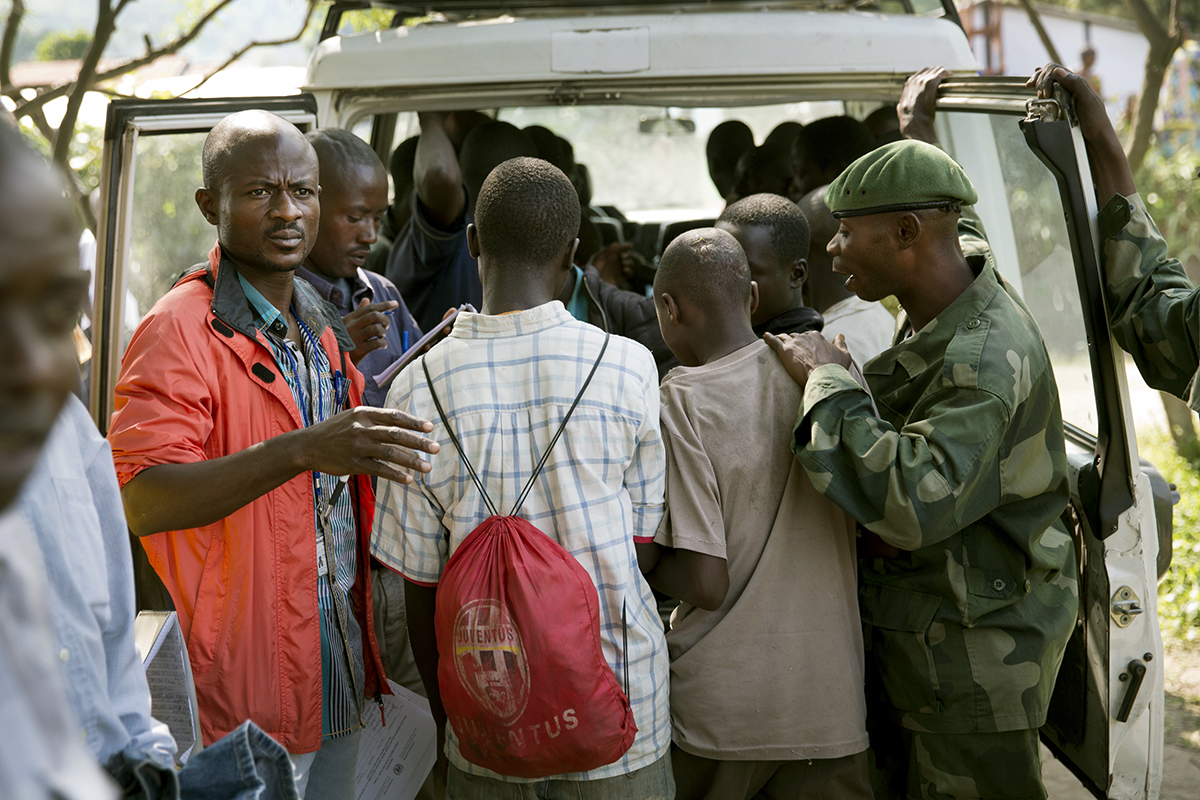
Finally, the reintegration of former child soldiers should aim at preventing further recruitment. It makes no sense to simply let it happen and then provide aid after the damage has occurred. In addition to the idea that successful reintegration can serve as a recruitment prevention strategy itself, other strategies should also be employed.
There are other strategies that must be combined to have an effect on the recruiters of child soldiers. Currently, the UN employs three different strategies: “deterrence, naming and shaming, and criminalisation of the recruitment of child soldiers.”40 While every strategy has proven to have severe limitations, and even the effect of the prosecution of military leaders for war crimes and the employment of child soldiers is questionable,41 it can be agreed that even slow progress is, nonetheless, progress. Whether this progress continues or not will also depend on the assistance provided to disarmament, demobilisation and reintegration. The recruiters of child soldiers should be held accountable by international as well as national agencies.42
Dealing with the highly complex issue of recruitment and the reintegration of child soldiers – and, possibly, even the future prevention of their employment – is a very challenging problem with significant consequences and impacts. But, Dallaire reminds us to remain indefatigably positive and steadfast in our quest to end the recruitment of child soldiers:
…but so what if we have to battle? So what if it takes forty or fifty years to end the use of the child soldier […]? It will have been worth it for the betterment of humanity and the protection of our youth.43
Endnotes
- Achvarina, Vera and Reich, Simon (2010) No Place to Hide: Refugees, Displaced Persons, and Child Soldier Recruits. In Gates, Scott and Reich, Simon (eds) Child Soldiers in the Age of Fractured States. Pittsburgh: University of Pittsburgh Press, p. 56.
- Drumbl, Mark A. (2012) Reimagining Child Soldiers. Oxford: Oxford University Press, p. 6.
- Ibid., p. 6.
- cf.Collier, Paul et al. (2008) Post-conflict Risks. Journal of Peace Research, 45(4), p. 464.
- cf. Ibid., p. 464.
- cf. Sanin, Francisco G. (2010) Organizing Minors: The Case of Colombia. In Gates, Scott and Reich, Simon (eds) op. cit., p. 135.
- cf. Collier, Paul et al. (2008) op. cit., p. 474.
- Gates, Scott and Reich, Simon (2010) Conclusion: Children and Human Security. In Gates, Scott and Reich, Simon (eds) op. cit., p. 250.
- cf. Ibid., p. 249.
- Ibid., p. 249.
- Dallaire, Roméo (2011) They Fight like Soldiers, They Die like Children. London: Arrow Books, p. 3.
- cf. Ibid., p. 117.
- cf. Wessels, Michael (2006) Child Soldiers: From Violence to Protection. London: Harvard University Press, p. 36.
- Ibid., p. 118.
- Singer, P.W. (2010) The Enablers of War: Causal Factors Behind the Child Soldier Phenomenon. In Gates, Scott and Reich, Simon (eds) op. cit., p. 95.
- cf. Machel, Graça (2011) The Impact of War on Children. London: C. Hurst & Co., p. 122.
- Ibid., p. 7.
- cf. Kingma, Kees (1997) Demobilization of Combatants After Civil Wars in Africa and Their Reintegration into Civilian Life. Policy Sciences, 30, p. 155.
- Ibid., p. 156.
- cf. Drumbl, Mark A. (2012) op. cit., p. 63.
- Ibid., p. 63.
- Ibid., p. 62.
- Coalition to Stop the Use of Child Soldiers (2008) Child Soldiers: Global Report 2008. London: Coalition to Stop the Use of Child Soldiers, p. 347.
- Wessels, Michael (2006) op. cit., p. 38.
- Coalition to Stop the Use of Child Soldiers (2008) op. cit., p. 299.
- Ibid., p. 299.
- Hauge, Wenche (2011) Girl Soldiers in Guatemala. In Özerdem, Alpaslan and Podder, Sukanya (eds) Child Soldiers: From Recruitment to Reintegration. New York: Palgrave MacMillan, p. 92.
- cf. Ibid., p. 92.
- Sanin, Francisco G. (2010) op. cit., p. 137.
- Andvig, Jens C. and Gates, Scott (2010) Recruiting Children for Armed Conflict. In Gates, Scott and Reich, Simon (eds) op. cit., p. 81.
- cf. Vermeij, Lotte (2011) Socialization and Reintegration Challenges: A Case Study of the Lord’s Resistance Army. In Özerdem, Alpaslan and Podder, Sukanya (eds) op. cit., p. 184.
- cf. Ames, Barry (2010) Methodological Problems in the Study of Child Soldiers. In Gates, Scott and Reich, Simon (eds) op. cit., p. 15.
- Lischer, Sarah K. (2010) War, Displacement, and the Recruitment of Child Soldiers in the Democratic Republic of Congo. In Gates, Scott and Reich, Simon (eds) op. cit., p. 145.
- Ibid., p. 146.
- cf. Ibid., p. 145.
- Achvarina, Vera and Reich, Simon (2010) op. cit., p. 60.
- Ibid., pp. 61–62.
- Lischer, Sarah K. (2010) op. cit., p. 149.
- Wessels, Michael (2006) op. cit., p. 257.
- Gates, Scott and Reich, Simon (2010) op. cit., p. 252.
- cf. Wessels, Michael (2006) op. cit., p. 238.
- Becker, Jo (2005) Child Soldiers: Changing a Culture of Violence. Human Rights, 32(1), p. 18.
- Dallaire, Roméo (2011) op. cit., p. 237.
About the Author
Originally from Germany, Anne-Lynn Dudenhoefer completed the Holocaust and Genocide Masters Programme at Uppsala University, Sweden, and is currently studying Criminal Justice at Oxford University, England.

